Which is the fastest NASCAR car in the history of the sport?
Other Sports
Formula 1 (F1) and NASCAR are widely recognized as two of the most prominent motorsports worldwide, boasting a continually expanding base of devoted enthusiasts. Both sports are widely recognized for their highly competitive nature. Fans frequently ponder the debate of NASCAR vs F1.
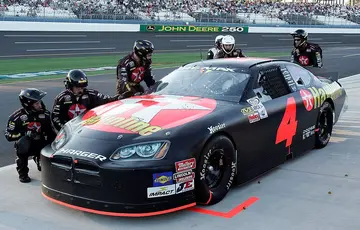
Is NASCAR or Formula 1 better? They both exhibit numerous distinctions. This article aims to examine the disparities between the two sports. To have superior speed determine the fine sport, it would be beneficial to conduct an analysis.
The NASCAR racing series employs a 5.9-litre electronic fuel injection (EFI) V8 engine capable of generating 750 horsepower. On the other hand, Formula 1 (F1) racing utilizes a four-stroke, 1.6-litre turbocharged V6 engine that produces approximately 1000 horsepower.
The F1 car accelerates from 0 to 60 mph in approximately 2.6 seconds, whereas the NASCAR car achieves a similar average speed of 3.4 seconds. It is widely acknowledged that Formula 1 (F1) vehicles have superior speed due to their significantly lighter weight and higher power output.
Which is the fastest NASCAR car in the history of the sport?
Other Sports
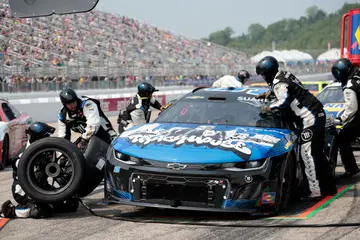
The danger associated with acceleration or deceleration in an F1 car surpasses any other motorsport, a fact that may not be widely known among fans. The open-cockpit cars exhibit rapid acceleration or deceleration, resulting in a substantial force exerted on the driver's neck.
This force is perceived as a weight increase of approximately five to seven times. Formula 1 drivers engage in neck training exercises and secure their helmets to the car to mitigate the risk of sustaining a significant neck injury.
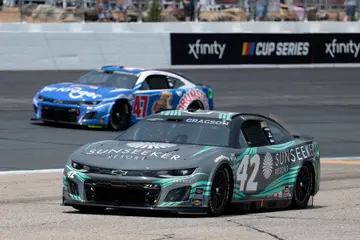
Both sports require distinct skill sets. The primary objective for Formula 1 drivers is to prioritize achieving the highest speed on the track while simultaneously ensuring the avoidance of any form of contact. In the context of NASCAR racing, drivers must exhibit high precision due to the proximity in which they operate, often resulting in frequent contact.
Finally! A list of the best female race car drivers of all time
MotoGP
During pit stops in Formula 1 races, the pit crew is restricted from refuelling the cars and is solely permitted to perform tire changes and specific repairs. During each pit stop in NASCAR races, the pit crews typically engage in the simultaneous tasks of tire swapping and car refuelling. The pit's duration generally ranges from 12 to 16 seconds, whereas Formula 1 (F1) pit stops are typically completed in less than 3 seconds, with the fastest recorded time being under 2 seconds.
The average lap time at Martinsville Speedway in NASCAR is 20 seconds, whereas the average lap time at Monaco Track in Formula 1 is 1 minute and 14 seconds. The occurrence of short circuits and the subsequent reduction in lap times in NASCAR races necessitates the implementation of a minimum of 200 laps or more. An F1 race typically consists of approximately 50 to 70 laps.
A list of the best race-driving schools in the world at the moment
MotoGP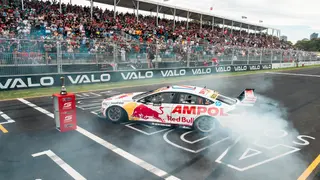
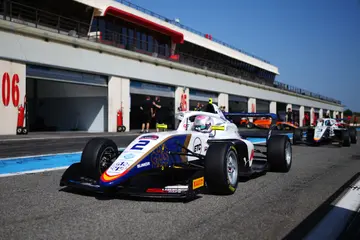
The financial aspect of any sport is a critical consideration. The revenue generated by sports is contingent upon the popularity of the respective sport enjoys. Both are widely recognized and highly popular motorsports. The global reach of F1 tops the mark due to its extensive schedule and widespread viewership.
The NASCAR racing series primarily operates within the United States, with most of its circuits in the Americas. In contrast, Formula 1 (F1) races are held at numerous international venues, spanning different countries worldwide, including the United States. Formula 1 possesses a more comprehensive demographic reach. Moreover, the viewership of Formula One has experienced a significant surge due to Netflix's Drive To Survive.
NASCAR boasts a higher quantity than Formula 1. The main factor contributing to this outcome is the race style. The drivers can engage in aggressive manoeuvres, such as bumping into other cars, to execute overtaking manoeuvres and gain a broader racing line. In Formula 1, drivers are strictly prohibited from contacting one another, resulting in a scarcity of overtaking manoeuvres.
The top 20 best American sports cars of all-time ranked
MotoGP
Nevertheless, it should be noted that overtaking is not prohibited in Formula 1. The Formula 1 (F1) governing body has introduced the Drag Reduction System (DRS) to minimize aerodynamic drag on F1 cars, providing a competitive edge when trailing another vehicle. To successfully execute a DRS overtake, an F1 driver must maintain a proximity of no more than one second behind the leading car.

The distinction between the vehicles employed in each sport is the utilization of stock cars in NASCAR and open-wheel cars in F1. NASCAR vehicles are designed to closely resemble their road car counterparts, featuring bumpers, fenders, and a complete body. F1 cars are constructed entirely from scratch and do not derive from conventional automobiles.
Formula 1 cars are designed as single-seaters, whereas NASCAR cars are constructed to resemble standard four-seater sedans despite accommodating only one occupant. In NASCAR racing, every vehicle is built based on a standardized set of templates. As a result, the cars exhibit a high degree of uniformity, with minor bodywork variations to distinguish between manufacturers such as Ford, Chevy, or Toyota. In contrast, Formula 1 cars necessitate that each team construct the chassis independently.
Which are the best sports bikes in the world for professional cyclists?
Super Bikes

In 2022, the Miami Grand Prix and the Darlington Raceway NASCAR race, which took place concurrently, achieved an average viewership of 2.6 million each. This marks a significant milestone as it is the first instance where a Formula 1 event has attained the most viewership figures.
Formula One enjoys significantly higher popularity outside the United States. During the 2022 season, NASCAR achieved an average viewership of over three million per race, marking the highest viewership numbers observed in the past four years. During the 2021 Formula 1 season, each race garnered an average viewership of 70 million.
Formula 1 drivers earn approximately twice the amount of their NASCAR counterparts. For instance, Lewis Hamilton, a prominent Formula 1 driver, receives an annual salary of $40 million, while Kyle Busch, a notable NASCAR driver, earns $16.9 million annually. In Formula 1, initial and mean salaries are notably elevated, with drivers in lower tiers typically earning approximately $750,000.
50 of the funniest race car jokes you will ever come across
MotoGP
Drivers in the NASCAR Cup Series receive a salary of slightly over $100,000 annually, comparable to their peers. Fortunately, drivers in both series have access to supplementary sources of revenue.
Why is F1 better than NASCAR? F1 cars are much lighter and more aerodynamic, which allows them to achieve much higher speeds. As recorded, the maximum rate earned by an F1 car stands at 246.98 mph.
The maximum velocity achievable by the latest iteration of NASCAR vehicles is approximately 195 mph, with most cars in the field maintaining a speed of roughly 185 miles per hour. The maximum speed documented in a race was recorded at 212 mph.
Settling the debate of NASCAR vs F1, the primary distinctions lie in the car designs and the nature of the races. F1 cars are characterized by their open-wheel configuration, while NASCAR cars are derived from their production car counterparts. The tracks utilized by both sports exhibit notable distinctions; however, it is indisputable that both sports offer a highly captivating viewing experience.
F1 pit stop record: Top 10 fastest pit stops in Formula 1
Formula 1
READ ALSO: Michael Malone's bio and details: All you need to know about the Denver Nuggets coach
Sports Brief recently disclosed details about the former player and current head coach of NBA's Denver Nuggets, Michael Malone, the son of the late coach Brendan Malone.
He helped his team win a championship after a 47-year drought. Michael Malone's Denver Nuggets won their first NBA Championship in 2023. Click on the link above to learn more about him.